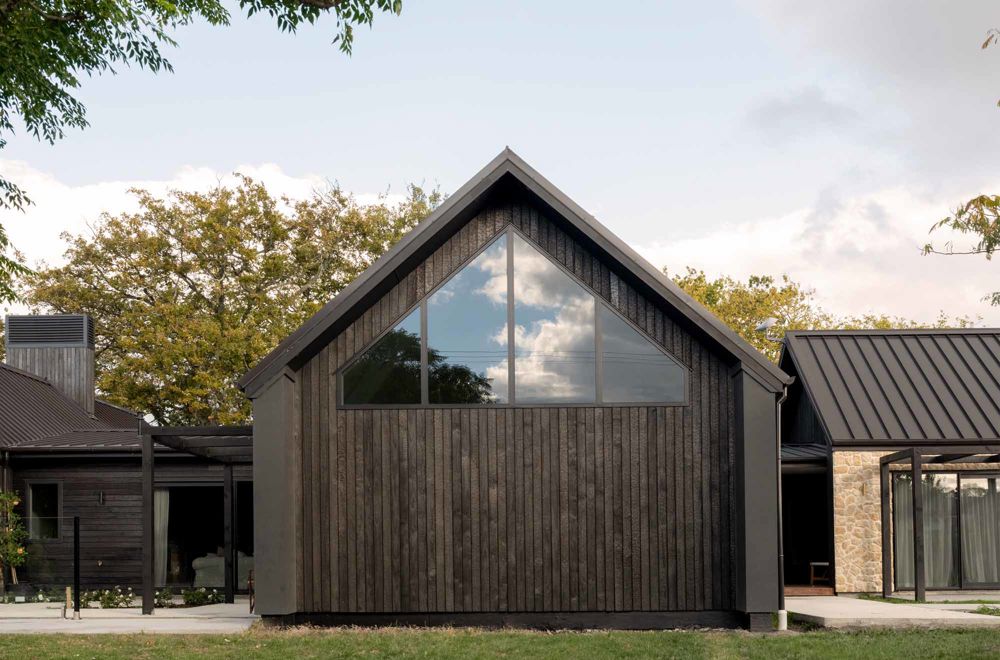-
When it comes to building a home, one of the most important decisions you’ll make is selecting the right cladding. Not only does cladding define the exterior look of your home, but it also plays a key role in its durability, energy efficiency, and maintenance requirements.At David Reid Homes we work with a variety of cladding materials to suit different environments, styles, and budgets. Here’s a breakdown of popular cladding options, their pros and cons, and what to consider when making your choice.
Timber Cladding
Timber cladding is a timeless choice that adds warmth and character to a home. Whether you prefer traditional painted weatherboards or natural timber with a weathered patina, this versatile option suits a wide range of styles.Pros:
Lightweight and easy to install.
Adds natural character and warmth to your home.
Offers flexibility in finishes, from stained to painted.
Cons:
Requires regular maintenance, such as staining or oiling, to protect against moisture and UV damage.
Can be less durable in extreme weather conditions compared to other materials.
Applying oil or stain can enhance the durability of timber cladding and help repel the elements.Schist and Stone Cladding
Schist and stone cladding offer a solid, natural look that is especially popular in areas like Queenstown and Wanaka, where the rocky, mountainous surroundings complement this style.Pros:
Extremely durable and weather-resistant.
Adds a luxurious, high-end appearance.
Excellent for thermal mass, helping to regulate temperature.
Cons:
Heavier material, requiring additional structural support.
Higher cost, especially if transported to regions where schist isn’t locally sourced.
While stone is iconic in colder, alpine regions, it can also work in urban environments for a bold, modern look. However, sourcing stone locally can significantly reduce costs and ensure a seamless fit with the environment. Using stone when it can’t be sourced locally can have significant costs associated, so it isn’t a very popular choice.Brick Cladding
Brick is a traditional option making a comeback in modern home design, thanks to its variety of colours and finishes.Pros:
Low maintenance and highly durable.
A wide range of finishes, from sleek modern to Mediterranean-inspired bagged or plastered looks.
Great thermal mass for energy efficiency.
Cons:
Heavier material, making it less suitable for multi-storey builds without additional support.
Higher cost for certain finishes or non-local bricks.
Brick is an excellent choice for homes in areas with fluctuating temperatures, as it retains heat in winter and stays cool in summer.James Hardie Products
James Hardie offers innovative cladding solutions that combine durability with design flexibility. Their fibre cement boards replicate the look of traditional timber and other materials while providing long-lasting performance.Pros:
Minimal maintenance compared to natural timber.
Lightweight and easy to install, saving time and cost.
Resistant to fire, moisture, and pests.
Cons:
Less natural in appearance compared to timber or stone.
James Hardie products are ideal for those seeking a modern look with minimal upkeep. They’re also well-suited for feature walls and architectural details, adding visual interest to a home’s exterior.
Corrugated Iron and Metal Cladding
Corrugated iron and other metal claddings are increasingly popular for contemporary homes. With a range of coatings available, they can be tailored to withstand even the harshest environments.Pros:
Lightweight and durable.
Low maintenance.
Available in various finishes and colours to suit modern aesthetics.
Cons:
Can become noisy during heavy rain without proper insulation.
Susceptible to denting if not handled carefully.
Metal cladding works particularly well in coastal or industrial-inspired designs, creating a sleek and modern appearance.Colour Trends in Cladding
Traditionally, darker, more masculine tones have been a hallmark of modern home design, but lighter colours are becoming increasingly popular. Shades of grey and white can create a brighter, more timeless look while also reflecting heat, making them a great option for sunnier regions.If you’re building a home in an area with high sunshine hours, like Hawke’s Bay, lighter cladding can help keep your home cooler. In regions with less intense sunlight, darker cladding remains a popular choice for its striking appearance and ability to blend seamlessly into natural surroundings.
Making the Right Choice
Choosing the right cladding depends on your location, style preferences, and maintenance expectations. Coastal areas might require materials with enhanced durability against salt and wind, while alpine regions benefit from the thermal mass of stone or brick. Lightweight options like timber or fibre cement are ideal for multi-storey homes or regions with high UV exposure.At David Reid Homes, we take pride in helping clients find the perfect cladding to suit their needs. Our team combines local knowledge with expert craftsmanship to ensure your home looks stunning and stands the test of time.
Get in touch with us today to explore your options and start your journey to building your dream home.
Choosing the Right Cladding for Your Home

Filed under:
- Latest News
- Build Advice